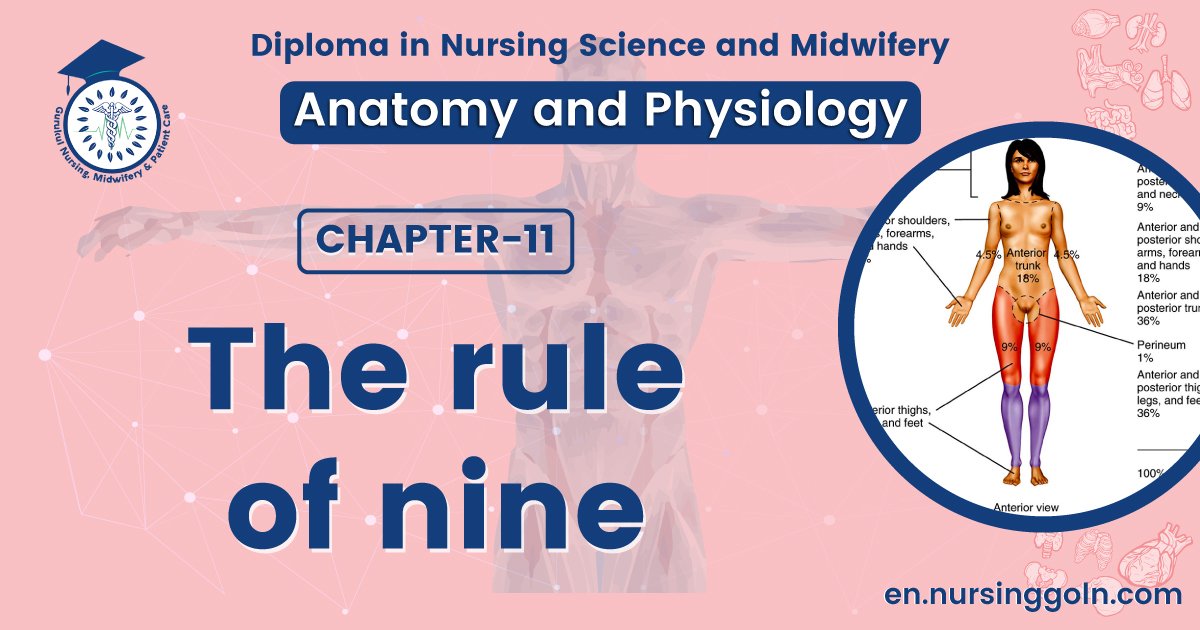The rule of nine-The course is designed for the basic understanding of anatomical structures and physiological functions of human body, musculoskeletal system, digestive system, respiratory system; cardiovascular system; urinary system, endocrine system, reproductive system, nervous system, hematologic system, sensory organs, integumentary system, and immune system.The aim of the course is to acquire knowledge and skills regarding anatomy and physiology.

The rule of nine
Rule of nine
The Rule of Nines estimation of body surface area burned is based on assigning percentages to different body areas. The entire head is estimated as 9% (4.5% for anterior and posterior). The entire trunk is estimated at 36% and can be further broken down into 18% for anterior compnents and 18% for the back.
A quick means for estimating the surface area affected by a burn in an adult is the rule of nines. The percentages are the approximate proportions of the body surface area:
- Count 9% if both the anterior and posterior surfaces of the head and neck are affected.
- Count 9% for both the anterior and posterior surfaces of each upper limb (total of 18% for both upper limbs).
- Count four times nine or 36% for both the anterior and posterior surfaces of the trunk,
- including the buttocks. Count 9% for the anterior and 9% for the posterior surfaces of each lower limb as far up as the buttocks (total of 36% for both lower limbs)
- Count 1% for the perineum.

Shortly:-
Rule of nine (adult)
Head & neck = (9%)
Front of trunk =( 9% +9%)=18 %
Back of trunk = (9% + 9%) = 18%
Both arms = (9% + 9%) = 18%
Right leg= 18%
Left leg= 18%
Perineum = 1%
Total= 100%

Rule of nine (Child)
Head & neck = (9% + 9%) = 18%
Front of trunk = (9% + 9%) = 18%
Back of trunk = (9% + 9%) = 18%
Both arms = (9% + 9%) = 18%
Right leg = 13.5%
Left leg = 13.5%
Perineum= 1%
Total= 100%
Read more:
